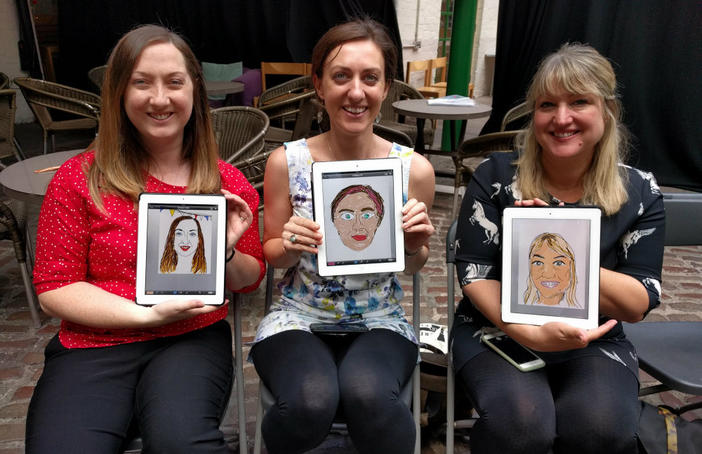Blog Post
How I came to embrace the pixel
Jason Wilsher-Mills on becoming a digital artist and helping to give people a voice

Jason Wilsher-Mills spoke on a panel about digital participation at our People Place Power conference and also led a delegate portrait workshop. Here he tells his story.
I was a traditionally trained artist, who revelled in the ‘craft’ of oil painting and was often heard to say to my fellow students, when studying painting, “I will never beep-beep use a computer to paint with.”
I am often reminded about this comment I made in the early 1990s.
I felt that technology got in the way of the craft and could never replace painting for me as a tool in which I made my art.
This all changed when I became disabled and was stuck in bed, relying on high doses of morphine to ease my pain. It was at this time that I had what I call my ‘Hagrid moment’ as one of my friends lambasted me and said I should be painting. That was who I was and it was what I should be doing. I responded that I couldn’t and it was at this point that I was introduced to using an iPad.
I bought my first iPad 10 years ago and within 4 months of purchasing, my life completely changed, as I showed my work in San Francisco. Due to the lightweight portability of the tablet I was able to work anywhere, including an operating theatre, when I was having an epidural for pain relief.
It was at this point that I was able to fully ‘embrace the pixel’ by admitting that I was now a digital artist. I had been an early adaptor of technology, due to my disability, but now I was able to accept the possibilities of creating art through using a digital platform. I started creating digital prints and working with augmented reality companies.
In fact, creative technology companies were approaching me. As they viewed working with an artist as a way of pushing their platform forward and improving their own practice.
I also saw that through using digital technology I could work with those groups, who traditionally would not be deemed able to work with ‘complex’ technology, such as dementia and learning disability groups.
My own work was about telling my story (of being a disabled person), but now I was able to give a voice to those who do not have one, through using cutting edge technology, such as augmented reality and creating high profile, high quality sculptures, which told the stories of these communities in a truly unique way.
Attending the CPP People Place Power conference was incredibly exciting for me, as I have worked mostly in areas of the country where there is low arts engagement, such as Wakefield, Corby and Hull. I was particularly pleased to be asked to speak on the panel ‘Deep and meaningful community engagement – is digital relevant?’ as I am a passionate advocate of introducing new technology, and new ways of making art to hard to reach groups, such as learning disabled communities. I was able to offer ideas and practical advice, whilst ‘challenging’ the audience to work with me on future projects.
Now I am looking to roll this approach out throughout the country. Please contact me at Jason@jwmartist.co.uk to find out how you can be involved.
Jason Wilsher-Mills







